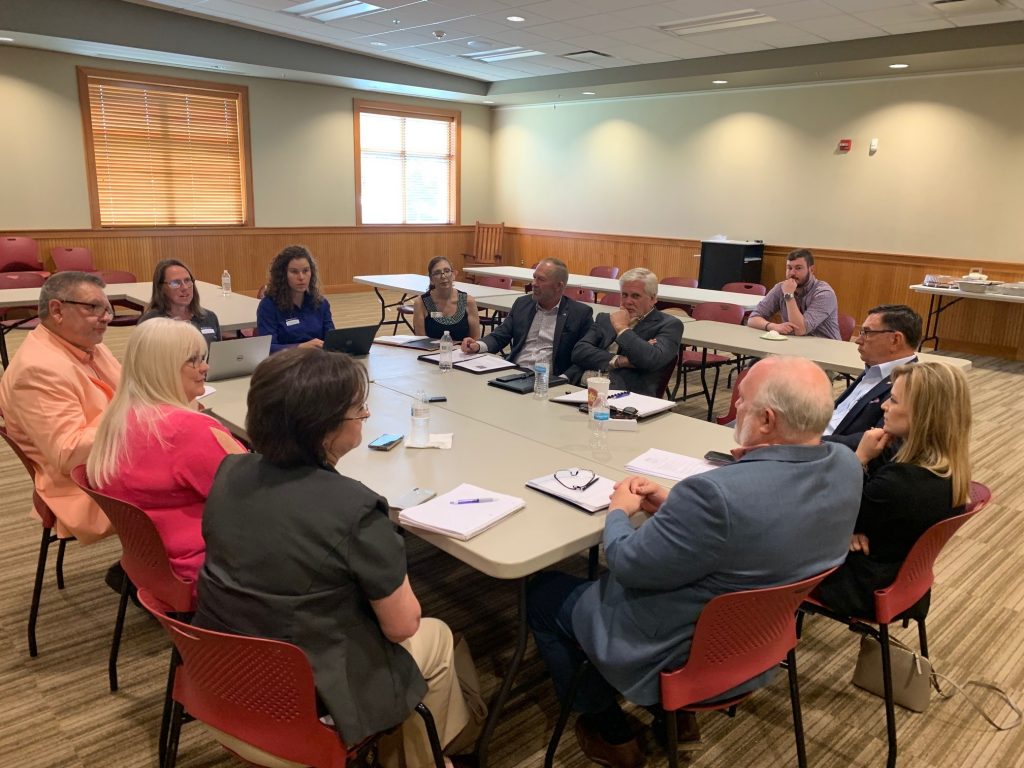New Project: Conserving Monarch Butterfly Habitats Along Idaho Highways

Researchers from the Montana State University Ecology Department and WTI’s Road Ecology program will investigate the roadside habitats of monarch butterflies in Idaho, as part of a new project for the Idaho Transportation Department (ITD). The monarch butterfly population has declined drastically in western states since the 1980s, largely due to habitat loss and fragmentation. […]
NEW PROJECT: WTI to Conduct Transit Study for Humboldt County, CA
WTI recently launched a new project to conduct a transit study in Humboldt County, a coastal county in northern California. The goal is to provide the Humboldt County Association of Governments (HCAOG) and the Humboldt Transit Authority with a review of all current transportation services, and to investigate the potential for new service in the […]
New Project will Explore Technology Applications for Rural Areas

WTI researchers Natalie Villwock-Witte, Karalyn Clouser, Jaime Sullivan, and David Kack have embarked on an FHWA task order project to explore the relationship between socio-economics, infrastructure, and travel behavior in rural communities. “Emerging Technologies and Opportunities for Improved Mobility and Safety for Rural Areas” will evaluate potential applications of new transportation modes and advanced technologies […]
Rural Transit Project Kicks Off in Arkansas

WTI Mobility researchers Rebecca Gleason and Danae Giannetti traveled to Fort Smith, Arkansas last week to help launch a rural transit hub feasibility study. They gave an overview presentation to the Frontier Metropolitan Planning Organization, which is partnering with WTI on the project along with Western Arkansas Planning and Development District. The goal of the […]
NEW PROJECTS: Connecting Rural Transportation with Economic Opportunity
The National Association of Development Organizations (NADO) Research Foundation will partner with the Small Urban, Rural and Tribal Center on Mobility (SURTCOM) to assist rural communities with passenger transportation projects that enhance economic development initiatives. This collaboration will encompass projects in two locations: Natalie Villwock-Witte will lead a project to develop a rural transit hub […]
USFWS Sponsors New Phase of Fish Passage Research
WTI, the MSU College of Engineering, and the Bozeman Fish Technology Center (BFTC) will continue their partnership with the U.S. Fish and Wildlife Service to study fish passage and the barriers that limit fish movements. Under a 5-year cooperative agreement, USFWS will sponsor a new phase of fish passage research projects, using the open channel […]
NEW PROJECT: Assessing the Costs and Benefits of an Animal Detection System
WTI Road Ecologist Marcel Huijser will lead a cost-benefit analysis of an animal detection system (ADS) for the Montana Department of Transportation (MDT). MDT is considering a possible installation of an ADS along U.S. Highway 89, near Livingston, Montana. The analysis will investigate factors such as the number of wildlife vehicle collisions (WVCs) on the […]
New Project: CHSC Explores Connection Between Impaired Driving and Traffic Safety Culture
Cannabis use by U.S. adults has increased by 50% over the last decade, and over the same period, cannabis use by drivers has increased by an estimated 8 -12%. Cannabis impairs psychomotor functions that can impair driving ability, which in turn may increase crash risk. As a result, drug-impaired driving is a growing traffic concern. […]
New Project: Phase 2 Planned for New WVC Data Collection System
The National Park Service (NPS) and US Fish and Wildlife Service (FWS) have partnered with the Western Transportation Institute – Montana State University (WTI) to develop a federal lands wildlife-vehicle collision (WVC) data collection system. This system is being designed to efficiently and effectively collect information on large animal – vehicle crashes, to address motorist […]
New Project: Safety Improvements for Low-Volume Roads in Montana
Highway agencies systemically screen the road network to identify those sites that are expected to yield the greatest safety benefits from an investment of available improvement funds. Traditional methods for identifying candidate locations tend to focus on well-travelled roadways that experience higher crash frequencies, despite the fact that many low-volume roads may have high levels […]
